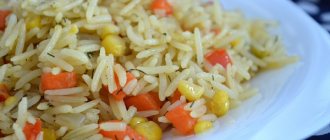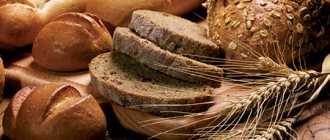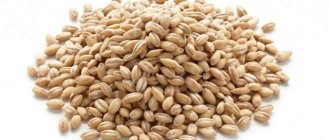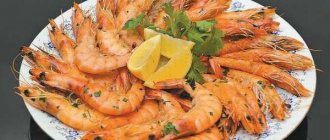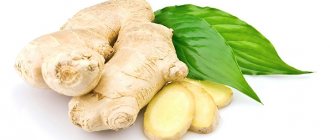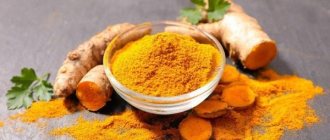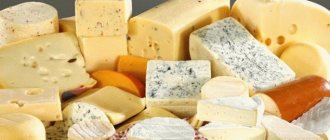When diagnosing pancreatic pathology that has developed due to poor nutrition, the development of cholelithiasis in the gallbladder, or during exacerbation of cholecystitis, the patient is prescribed a special diet that excludes all foods that can load or irritate the pancreas. In the second week of dietary nutrition, patients are allowed to introduce chicken meat into their diet.
Chicken for pancreatitis is considered one of the varieties of dietary meat, from which first and second courses, hot and cold appetizers, rolls, salads, kebabs and much more are prepared. The value of this meat lies in its availability and low cost, high nutritional value of their meat products and low fat content.
Is it possible to eat chicken if you have pancreatitis?
Pancreatitis in medicine is the inflammatory process of the pancreas, in which the functional activity of the organ is disrupted. The pancreas is an organ of the digestive system responsible for the production of enzymes necessary for the breakdown of food. Each time, the amount of this secretion changes depending on the composition of the food bolus: for example, easily digestible foods do not require increased work of the pancreas, but heavy fatty and fried foods, on the contrary, require abundant amounts of enzymes, and therefore the organ is overloaded, starting to work on full power. This mechanism formed the basis for the need for dietary nutrition, in which foods that can provoke an attack are excluded from the patient’s diet.
Eating meat can make a huge contribution to the restoration of damaged pancreatic tissue, because this product contains large quantities of animal protein, which is essentially a building material. In addition, meat is rich in all necessary amino acids, iron, phosphorus, potassium, as well as vitamins A, D, E, B12. However, not all varieties of this product are equally beneficial for people suffering from pancreatitis, and this factor must be taken into account. The fact is that some species are very fatty, and the content of extractive substances in them stimulates the production of pancreatic enzymes to the maximum possible extent, which is extremely undesirable for a weakened organ. Such meats are pork, lamb, duck and goose. It is prohibited to eat products from these varieties if you have inflammation of the pancreas, even if the method of preparing the dish is not frying.
Meats acceptable for pancreatitis include chicken, turkey, rabbit, veal and beef, with chicken meat having a special place. All these types can rightfully be called dietary. Dishes made from any of these low-fat varieties do not irritate the gastrointestinal tract and do not overload the pancreas. However, at the same time, they have a positive effect on the body and make a significant contribution to the healing process.
Chicken meat is introduced into the patient’s diet soon after the end of the exacerbation period. The delicate fibers of this product are easily digested and also well absorbed, therefore, for any diseases of the digestive system - not only for pancreatitis, chicken dishes are strongly recommended by both nutritionists and gastroenterologists. Regular consumption of this poultry meat helps to quickly restore strength and strengthen the immune system. It is especially important to include chicken in the diet after surgery on the pancreas or any other organ.
The pancreas, its functions and tasks in the body
The pancreas is an organ located behind the human stomach and is made up of two types of tissue. The functions of the pancreas are limited to the production of substances necessary for the digestive process. They are divided respectively into endocrine and exocrine.
Endocrine is aimed at producing the following hormones:
- insulin, which breaks down glucose in the blood, participates in fat, protein and carbohydrate metabolism and lowers sugar levels;
- glucagon, which, on the contrary, increases blood sugar levels and protects the liver from fatty degeneration;
- Ghrelin is a hormone that stimulates appetite.
Exocrine functions come down to the production of pancreatic juice, necessary for the digestion of food, as well as enzymes called amylase, lipase, trypsin and chymotrypsin.
Disturbances in the functioning of the pancreas can be caused by chronic pancreatitis; they indicate a lack of function of the organ and the degeneration of its tissue into connective tissue.
The benefits and harms of chicken meat
The unique composition of chicken puts the product at the top of the ranking among all dietary types of meat. It contains many protein amino acids (approximately 92%) and has virtually no fat, cholesterol and carbohydrates.
The list of vitamins and minerals included in the product is quite extensive. It includes:
- Vitamins : A, E, C, PP, B1, B2, B3, B5, B6, B9;
- Minerals : potassium, sodium, magnesium, sulfur, calcium, iron, zinc, chlorine, phosphorus.
One of the advantages of chicken meat is its low calorie content: for example, fillet contains about 113 kcal, legs - 180 kcal, and a small carcass as a whole - about 190 kcal.
Not all chicken is equally healthy: poultry raised in a poultry farm often contains antibiotics and hormones, which it was regularly supplied with to gain weight and protect against various infections. Therefore, such meat is unlikely to be useful not only for a sick and weakened person, but also for healthy people. But homemade chicken has only positive qualities, thanks to which the desired therapeutic effect is achieved.
We are talking about the following properties of the product:
- Strengthening immunity;
- Normalization of metabolism;
- Recuperation;
- Improving blood circulation and hematopoiesis processes;
- Relieving stress and depression;
- Strengthening bones and muscles;
- Improved vision.
Eating this meat is especially beneficial for obesity and gastrointestinal ulcers, hypertension and nervous tension, anemia and gout, stroke and coronary heart disease. In case of inflammation of the pancreas, chicken is no less important: damaged tissues of the organ need regeneration, which is extremely necessary for the speedy restoration of normal activity and performance of the pancreas.
However, you can’t do without a fly in the ointment, because in some cases, chicken can be harmful to health. For example, you should not eat the skin (it must be removed and simply thrown away before use), as well as grilled chicken, smoked or fried meat, since during such heat treatment toxic substances are released that can aggravate the course of the disease. In addition, such heavy dishes are difficult to digest; to break them down, the pancreas needs to produce too much enzymes.
Another important point is proper preparation. It's not just about the method of processing meat, but also about the time allotted for it. Undercooked or insufficiently baked meat can provoke the proliferation of pathogenic microorganisms in the large intestine, which, in turn, often acts as a source of intoxication or exacerbation of gastrointestinal diseases. For example, if a chicken was sick with salmonellosis, poor processing of its meat increases the risk of infection significantly.
And finally, the last rule that must be followed is to use only poultry, since store-bought poultry often contains many harmful components - we have already talked about this a little higher.
Chemical composition of chicken heart
Chicken hearts are a very good source of protein (up to 21 g / 100 g), B vitamins (niacin, PP - up to 50% and riboflavin B2 - up to 60% of the recommended daily requirement - RDI), zinc and iron (25 and 31% RDI , respectively), as well as cobalt, copper and phosphorus (102, 31 and 22% of RDP).
Thus, a small portion of chicken hearts can cover a person's daily requirement for these nutrients.
Chicken heart contains lysine, which improves the synthesis of enzymes and hormones, and in addition has a strong antiviral effect. Therefore, hearts are indicated for use during the rehabilitation period after viral infections and colds.
Features of use
There are several rules for using this product. People suffering from pancreatitis should familiarize themselves with them and follow each point in the future - this will help avoid unpleasant consequences in the form of another attack.
- First of all, the meat must be fresh. Clear signs of a quality product are its light pink color, as well as the absence of a musty or sour smell. Good meat should not have mold or mucus; in addition, the elasticity of chicken meat should be taken into account: when you press it with your finger, a dimple is formed, which immediately smoothes out. If you defrosted chicken and for some reason did not cook anything from it, remember that after 36 hours of storage in the refrigerator, the product can no longer be used: the process of proliferation of pathogenic microorganisms has probably begun in it.
- It is important to consume only poultry meat - this guarantees that the product will not contain harmful components (hormones, antibiotics, etc.).
- The method of preparation plays a huge role. When the pancreas is inflamed, it is strictly forbidden to eat fried meat, and the method of stewing is not recommended. During heat treatment, the vegetable oil in which the product is fried releases toxic substances that can cause harm to the body. In addition, fried and oil-soaked food itself is fatty and heavy, it irritates the gastrointestinal mucous membranes and causes the pancreas to work too intensely. That is why the only acceptable methods of cooking for this disease are boiling, baking or steaming.
- Chicken meat, just like any other product, should not be overused. 150-200 g is the maximum permissible daily dose of this product. Overeating in general is also incompatible with diseases of the digestive system, so portions should be small and meals should be frequent.
Currently reading: Is it possible to eat cottage cheese if you have pancreatitis of the pancreas - recipes and reviews
It is also necessary to remember that before eating meat cooked in any form, it should cool slightly: excessively hot food is harmful to the gastrointestinal tract.
Chicken stomachs and hearts for pancreatitis
Dishes made from offal, including chicken, are not to everyone’s taste. However, due to their valuable composition and low calorie content, these meat parts deserve an honorable place in the diet of both a healthy person and people suffering from pancreatitis. By the way, there are much more vitamins in offal than in ordinary meat pulp, and this feature can play a huge role in the restoration of the body.
With the onset of the stage of stable remission, provided that the patient does not have symptoms such as pain, nausea and vomiting, chicken stomachs can be gradually introduced into the diet. They should not be used for acute pancreatitis, since these parts are characterized by a fairly dense structure, which even after prolonged boiling is indestructible. Before starting cooking, the stomachs should be thoroughly rinsed and cleaned of film and fat. Only after this can they be placed in a container of water and boiled for several hours. Upon completion of this process, the offal is passed through a meat grinder and then added to various dishes.
Chicken hearts are particularly beneficial. They do not contain accumulations of harmful toxins, but at the same time they are saturated with pure protein and iron. In addition, chicken heart contains a large amount of copper, which a person needs for normal functioning of the central nervous system and maintaining normal blood composition. The high concentration of magnesium in this product ensures healthy blood vessels and optimal blood pressure levels. You can include chicken hearts in your diet only 3 months after the attack. Just like stomachs, before cooking these parts must be rinsed well under running water, cleaned and only then boiled. Usually this takes at least 2.5-3 hours.
Stewing or frying chicken giblets is strictly prohibited; it is not recommended to mix them with various spices, herbs or garlic - all these cooking methods are unacceptable for pancreatitis.
Chicken fillet for pancreatitis
The option of using chicken fillet is especially relevant for those who do not have a lot of free time. This meat part does not require too much time for its preparation; it does not need to be separated from the bones and the veins that are simply not there need to be cut off. In addition, it is universal, since it can be used to make a wide variety of dishes. It can be simply boiled meat, a soup based on it, or aspic. You can also get an excellent dish from chicken fillet if you finely chop the poultry meat and combine it with vegetables. Minced chicken fillet and any other meat parts provide many culinary possibilities: you can use it to make meatballs, steamed cutlets, meatballs, quenelles, and cabbage rolls.
The benefits of such dishes for a weakened body will remain only if the meat is properly cooked. It should be remembered that frying or stewing using vegetable oil and various seasonings will not protect against the occurrence of unwanted manifestations of the disease, even if we are talking about using dietary lean meat.
How to cook chicken hearts correctly
Chicken hearts, like any other delicacy, have their own cooking secrets. A housewife who does not know them can end up with a tough and unpleasant-smelling dish. The cause of such troubles is the manufacturer’s incorrect technology for preparing the product, for example, when bile gets into it. But don’t despair: everything can be fixed.
Since the heart is a circulatory organ, when preparing it for heat treatment, you need to make sure that there are no blood clots left in it. If there are any, they must first be removed. To do this, each heart is cut in the center and opened, like a book. After this, they thoroughly clean off any dried blood that may remain there, as well as any protruding white blood vessels, veins and films. Next, rinse well and soak in vinegar: 5 minutes is enough. This will help eliminate the bitterness from bile, if any.
It is customary to pre-cook chicken hearts to get rid of harmful microorganisms and possible antibiotic residues. This is done for an hour, while the first broth is drained.
How to choose chicken in a store?
Poultry meat located behind a store window does not indicate that the product is of high quality and fresh - this must be taken into account when purchasing. There are frequent cases of improper storage of the product, as a result of which the meat spoils and pathogenic microorganisms begin to multiply in it. Naturally, no one will be able to see them with the naked eye, but knowing some principles will help protect you from purchasing a rotten product and subsequent poisoning with it. Eating such meat is dangerous for any person, especially when it comes to people suffering from pancreatic inflammation.
So, when choosing a carcass, you need to be guided by the following rules:
- The packaging in which the chicken meat is located must be transparent: this is the only way you can evaluate the appearance of the chicken;
- The bag should not leak: a large amount of blood and meat liquid in it is not a good sign;
- Blood clots or a bluish tint to the meat is an indicator of its staleness; Normally, the color of the product is uniform and light pink, but severe redness and bruising are clear evidence that the bird was sick and died of its own death;
- Mucus on meat parts, stickiness, and even more so traces of mold are the surest sign of a spoiled product;
- Elasticity is another criterion for high-quality chicken: when you press on the meat, the dent that appears from your finger should instantly disappear and not remain on its surface;
- The smell is no less important: it should be natural and mild, and not musty, sour or even medicinal;
- It is best to opt for a carcass weighing less than 1.5 kg: the too large bird was probably raised on hormonal drugs that were administered to it at the poultry farm for accelerated growth and rapid weight gain;
- The shelf life should ideally not exceed 7 days, otherwise you risk purchasing rotten meat or “stuffed” with harmful additives;
- The option of marinated chicken cannot be considered: most often, unscrupulous sellers disguise stale spoiled goods in this way;
- You should not buy frozen meat: this way you will not be able to evaluate its color, smell, or anything else.
The only thing you can count on with certainty when buying chicken meat in a store is that it has been tested for various diseases and, in particular, salmonellosis. When purchasing this product, so to speak, there is no such guarantee at hand, so it is best to take carcasses from people you know or check them in special places - in many markets there is such an opportunity.
And finally, a few rules regarding storing meat. Remember that purchased raw chicken can be stored in the refrigerator for no more than a day, so if you change your mind about cooking something from it, then put the product in the freezer as soon as possible. During cooking, do not place raw meat next to prepared foods or clean dishes, and all kitchen utensils that were used for cutting (knife, board, etc.), including hands, should be thoroughly washed under running water and soap.
Energy value
Calorie content per 100 g of product:
- boiled: 100–160 kcal;
- stewed: 95–100 kcal (with the addition of sour cream: up to 110 kcal);
- fried: about 120 kcal;
- smoked: 135–138 kcal.
For comparison: chicken hearts contain 159 kcal, and chicken liver - 137.7 kcal per 100 g. It turns out that gizzards are a low-calorie, dietary product.
The calorie content of broth cooked with chicken gizzards starts at 50 kcal and increases in proportion to the concentration of the main product.
The nutritional value of chicken gizzards is given in the table.
| Name | Content per 100 g of product, g | Daily norm, % |
| Squirrels | 18,2 | 22,2 |
| Fats | 4,2 | 6,46 |
| Carbohydrates | 0,6 | 0,47 |
The calorie content of chicken stomachs per 100 g is 114 kcal, which is only 8.01% of the daily value.
Consumption of chicken meat at different stages of the disease
Chicken should become an integral part of the diet for diseases such as pancreatitis. The only condition that must be observed is the correct method of preparation, which involves excluding frying the product or stewing it. At the first stage, after all the symptoms disappear, the ideal option would be meat dishes based on minced chicken. Meatballs, steamed cutlets, meatballs, quenelles, souffles and casseroles - all these are dishes that will not only delight with their taste, but will also have a positive effect, giving the body strength and saturating it with useful substances. As the rest period is established, the menu can be expanded by adding chicken aspic, soup with weak meat broth, salads or baked chicken.
Currently reading: Main symptoms and treatment of reactive pancreatitis
In acute form
In the first few days after the attack, the patient is not allowed to eat absolutely anything: only drinking is permissible, and this can be either ordinary boiled water or chamomile decoction. This need for forced hunger is to ensure rest for the pancreas. At first, a weakened and failed organ cannot function normally. Severe swelling of its tissues becomes the main reason for the narrowing of the bile ducts and stagnation of secretion in them. Food entering the body, even dietary, requires the mandatory production of enzymes for its breakdown, resulting in a load on the pancreas, which can no longer cope with its everyday tasks. In this regard, neither chicken nor any other food is allowed to the patient.
In the chronic stage
After 2-3 days, during which the organ manages to restore its functionality at least to a small extent, the patient can begin to eat. At the first stage, only easily digestible foods are allowed that are not capable of overloading the pancreas and thereby causing a deterioration in its condition. Chicken meat is exactly the product that is one of the first to be included in the diet. However, at the initial stage, it can only be consumed in ground form - we are talking specifically about minced meat and dishes made from it. In addition, souffles and casseroles are welcome - these dishes have a fairly delicate consistency. Not capable of harming the gastrointestinal tract. Further, after several months, when the patient’s condition becomes stable and good, and the need for mechanical sparing of the organs of the digestive system disappears by itself, it is allowed to eat chicken meat in pieces. The menu includes soup with sliced meat, baked chicken, goulash, salads using chopped chicken, and jellied meat.
During exacerbation of the disease
The period of exacerbation of the disease occurs with certain difficulties. Just like the acute phase, it is characterized by the patient having severe abdominal pain, nausea, vomiting, diarrhea and general malaise. Therefore, it is very important to provide a two-day fast, during which the weakened pancreas will slightly restore its strength. After this, the introduction of food follows a similar pattern: abstaining from food for several days - gradual inclusion of easily digestible foods - expanding the menu after several months.
At the end of the exacerbation period, which, as a rule, lasts no more than 2-3 days, the patient is allowed to eat dishes made from minced chicken. In this case, the minced meat must be passed through a meat grinder twice - this will ensure a more delicate texture of the desired product. Minced meat can also be made from cooked meat: it will be an excellent addition to cereal porridges, mashed potatoes or vegetable soups.
The main rule that should be followed is not to overeat, the portion of meat should not exceed the permissible limit (150-200 g), and dishes prepared from it should be served exclusively warm.
The ratio of nutritional properties in the composition
Many people consider chicken gizzards to be a second-rate product with no nutritional value. In fact, they include:
- vitamins: A, E, C, B2, B3 (nicotinic acid), B9 (folic acid), B12;
- macro- and microelements: iron, zinc, selenium, phosphorus, potassium;
- organic acids.
Ratio of BZHU per 100 g of product:
- proteins - 18 g;
- fats - 4.2 g;
- carbohydrates - 0.6 g.
The beneficial properties of chicken stomachs are determined by their rich chemical composition. The vitamins and minerals included in their composition are summarized in the table below.
| Vitamin | Content per 100 g of product, mg | Name of mineral | Content per 100 g of product, mg |
| A | 0,019 | Potassium | 237 |
| IN 1 | 0,028 | Calcium | 11 |
| AT 2 | 0,231 | Magnesium | 15 |
| AT 5 | 0,631 | Sodium | 69 |
| AT 6 | 0,112 | Phosphorus | 148 |
| AT 9 | 0,005 | Iron | 2,49 |
| AT 12 | 0,00121 | Manganese | 0,055 |
| WITH | 3,7 | Copper | 0,116 |
| E | 0,33 | Selenium | 0,0255 |
| RR | 3,68 | Zinc | 2,72 |
If anyone still has any misunderstanding about whether chicken gizzards are healthy, you should familiarize yourself with the vitamin composition of the product.
Chicken stomachs are rich in nutrients
Thus, the main valuable components of chicken navels are:
- Iron is a source of hemoglobin, which provides nutrition and blood supply to the entire body. With its deficiency, a serious illness occurs - anemia, which causes a malfunction of all vital organs;
- Phosphorus is the basis for healthy bones, teeth, nails and hair. In addition, phosphorus deficiency leads to disruption of the body's acid-base balance;
- Zinc – is responsible for removing toxins from the human body, promotes growth, the production of antioxidants, and contributes to the normal functioning of the digestive system;
- Selenium is a source of thyroid health, an activator of iodine absorption by the body, an opponent of heart and vascular diseases;
- In addition, chicken stomachs contain B vitamins, which are responsible for the normal functioning of the brain, nervous system, carbohydrate and lipid metabolism;
- The abundance of fiber in the by-product normalizes the digestive process, and with periodic treatment with chicken stomachs, the microflora of the stomach is stabilized and the intestines’ ability to have regular bowel movements is restored.
Chicken meat for cholecystopancreatitis
Inflammation of the pancreas often occurs in conjunction with cholecystitis. This disease is understood as an inflammatory process of the gallbladder, which is of an infectious nature: viral, bacterial, parasitic. The pathology is accompanied by pain in the abdomen, nausea and vomiting, and loose stools. That is, the clinical picture has many similarities with pancreatitis.
Just like inflammation of the pancreas, cholecystitis requires adherence to dietary nutrition at all stages of its course. So, in the first few days of the acute phase, the patient needs to fast: at this stage, eating any foods, including chicken, is prohibited. With the onset of the remission period, low-fat foods are gradually introduced into the diet: vegetable and cereal soups, fermented milk products, mashed potatoes, slimy porridges, stale bread and unhealthy cookies, but a special place is given to dietary meat, where chicken takes pride of place. It is included in the diet after pain relief. Chicken meat is extremely necessary for the restoration of the body, since this product contains a large amount of animal protein, which is a building material for tissues and cellular structures. At first, chicken should be ground and chopped; it is advisable to prepare dishes from minced meat: such food is not dry, so it will not damage the gastrointestinal tract. After a few months, stewing and baking are allowed, the need for chopped food gradually disappears, so the menu can safely include boiled chicken slices or soup using them, goulash, salads with chicken, as well as vegetables stewed with this meat.
The daily dose of chicken meat for cholecystitis is no more than 150-200 g. You should not exceed the acceptable limits: eat chicken in large quantities or even overeat, since any wrong action can negatively affect your health and provoke another attack.
Cooking recipes
There are many ways and recipes for cooking chicken breast for pancreatitis. Let's consider the most interesting dishes made from chicken meat and minced meat, recommended for pancreatic pathology.
Chicken salad
A piece of boiled chicken fillet, boiled potatoes and carrots - 3 pieces, boiled eggs - 2 pieces, low-fat yogurt - 200 ml. Cut all products into cubes, mix, add salt and season with yogurt.
Recipes for chicken dishes for pancreatitis
A variety of all kinds of dishes using dietary meat such as chicken makes the patient’s diet not so gray and boring, but, on the contrary, very attractive. There are a lot of recipes according to which you can prepare not only tasty, but also the most healthy dishes. This is exactly the kind of food a person with a weakly functioning pancreas needs.
Let's look at the most popular recipes.
Chicken baked in the oven
To prepare such a dish, which is suitable even for a festive table, you will need: chicken meat (you can use both a small carcass and its individual parts), 20-30 g of sour cream, salt, herbs for decoration.
First, you need to gut the chicken, cut off the membranes, and then rinse it thoroughly under running water. Pour sour cream into a separate container, salt it, rub the carcass with the resulting mixture. Baking requires foil or a special sleeve. If the chicken is cooked in a sleeve, then the meat must be placed in it, and then tied with polyethylene on both sides, but not tightly. If you don’t have a sleeve, you can use foil: cut off a sheet of this paper and simply cover the meat with it. It is allowed to pour a small amount of water into the mold. It usually takes at least an hour to prepare such a dish. In order for the chicken to come out juicy, it is recommended to periodically remove it and re-brush it with sour cream sauce. The readiness of the dish is checked using a toothpick: if the juice does not flow out when pierced, then it can be taken out. At the very end, you can sprinkle the chicken with herbs.
Chicken baked in pumpkin
Using the same technology, you can bake chicken with pumpkin. The vegetable will be a wonderful addition, which will not only add a special zest to the dish, but will also make it as healthy as possible.
Ingredients:
- Rice - 250 g;
- Dried apricots - 100 g;
- Small pumpkin (about 1 kg);
- Olive oil;
- Salt.
We gut and wash the meat similarly to the above scheme. We get to work on the pumpkin: peel it, and then cut off the top, removing all the seeds. The result should be a pot for the filling. Place rice on the bottom and finely chopped chicken on top. After pouring a tablespoon of olive oil over the meat, place the pumpkin in the oven for 2 hours. The dish must be cooked at a temperature of +160-170 C.
Currently reading: Eggplant for pancreatitis - beneficial properties, use and recipes
Kneli
These meat products resemble meatballs or steamed cutlets in taste and appearance, however, they have fundamental differences. Firstly, the dumplings are formed into spherical shapes, and secondly, in the process of preparing them only flour is used; breadcrumbs are not required for deboning. In addition, the quenelles are served in the sauce in which they are cooked.
So, we will need:
- 300 g minced meat;
- 100 ml milk;
- Egg;
- A couple of slices of stale bread.
- Add a raw egg, salt and soaked bread to the minced chicken. After mixing well, we form meat balls and then place them in the steamer bowl. The container can be pre-greased with a small amount of butter. Set the timer for 30 minutes, after the specified time the dish can be considered ready.
Steam cutlets
Steam cutlets are prepared in approximately the same way. To complete them you need: 500 g of minced meat, one egg, a small onion and herbs (optional), several slices of stale bread, salt, breadcrumbs.
Combine the minced meat with a raw egg, chopped onion and chopped herbs, add salt, then mix thoroughly. Soak the bread in a separate plate, then add it to the meat mixture and mix again. Having formed the cutlets, sprinkle them with breadcrumbs. The next step is preparing the steamer for use. To do this, the bowl of the device should be filled halfway with water, and a special stand designed for laying out products should be installed on top of it. Place the cutlets on it and set the timer for 30 minutes.
If the house does not have a double boiler or a multicooker, the device can be replaced with a regular saucepan and a colander. The cooking technique is the same: water is poured into a container, a colander greased with butter is placed on top, and cutlets are laid out in it. Usually half an hour is enough for them to be ready.
Souffle
This dish turns out to be very tender; it can be introduced into the patient’s diet within one to two weeks after the attack. It's easy to prepare. The chicken breast is passed through a meat grinder twice, a raw egg is driven into the minced meat, salt and 150 ml of low-fat milk are added. Using a blender, the mass is whipped and then transferred into special forms (metal or silicone). Bake the soufflé in the oven at 200 C for half an hour.
Chicken cream soup
Required Products:
- A small piece of boiled chicken (250-300 g);
- 150 ml milk;
- A glass of vegetable broth;
- 5-7 g butter.
This is a good alternative to traditional soup, and besides, this dish is prepared very quickly in the presence of vegetable broth. In the broth made from potatoes, carrots and onions, you need to add slices of meat and herbs. After waiting for it to cool to 60 C, add boiled milk and butter in a small stream. Finally, the resulting mixture must be whipped with a blender until it acquires a homogeneous consistency.
Meatballs
You can complement any first course and make it even more satisfying with the help of meatballs. These meat balls are steamed. They will need:
- 500 g chicken fillet;
- Small onion;
- 10 g butter;
- Egg;
- Salt, herbs.
We make minced meat from the fillet: we pass the meat through a meat grinder. With its help, we chop the onions and herbs, after which the resulting mixture must be combined with twisted chicken. Beat the egg into the mixture and add butter, mix the minced meat well, and then form it into balls the size of a walnut. Steam the meatballs for about 15 minutes.
Zucchini with minced chicken
If you don’t know what you can make from zucchini for pancreatitis, combine it with chicken: this combination will be an excellent option that will add variety to your menu. 100 g of boiled rice should be mixed with 500 g of minced chicken and a small amount of herbs. Place chopped zucchini on the bottom of a mold greased with butter, the next layer is minced meat and rice. At the end, the dish must be poured with sour cream (100 g is enough) and placed in the oven or slow cooker for 30 minutes.
Aspic
Products we will need:
- Chicken fillet;
- 2 small onions;
- A packet of edible gelatin - 1 pc.;
- 3 bay leaves;
- Salt.
After washing the fillet under running water, place it in a saucepan, fill it with water and put it on the fire. After the water begins to boil, drain the first broth, and fill the meat a second time with new water. It is necessary to boil the meat for a long time until it begins to fall apart. About half an hour before cooking, add salt and bay leaf, 10 minutes before adding the onion, cut into pieces. Next, let's deal with gelatin. Having diluted it in a cup of cold water, pour it into the broth, wait until it boils, and then turn it off. When the broth has cooled, you need to remove the chicken pieces from it and chop them. Place the meat in the prepared plates and pour the broth on top. It is allowed to add greenery: it can be either parsley or dill. You can start eating such a dish only after it has cooled somewhat and then stood in the refrigerator until a frozen consistency has formed.
Chicken salad
Meat salad doesn't take much time. It cooks very quickly, and the result is a quite tasty and, at the same time, healthy dish. Chicken fillet, 3 potatoes, 3 carrots and 2 eggs should be boiled. After the products have cooled, they must be cut into small cubes, salted and mixed well. Seasoning a dish with mayonnaise is strictly prohibited for pancreatitis, so it is best to use a special salad dressing or, in extreme cases, sour cream.
Providing the body with easily digestible protein during inflammation of the pancreas is one of the components of successful treatment and speedy restoration of the organ’s functionality. Chicken meat is a low-fat dietary product that contains a lot of important and essential substances. When prepared correctly, you can derive maximum benefit from it for the body, which will have a positive effect on both the patient’s well-being and the condition of the damaged organ.
Chicken stomachs for acute pancreatitis and exacerbation of chronic
Due to its low calorie content and high protein content, the product fits into the diet of those losing weight: it satisfies quickly and for a long time, without leaving extra centimeters on the stomach and hips.
Choose boiled or stewed gizzards with onions and carrots. Use minimal oil during cooking. Avoid sauces made from sour cream and cream.
You need to know harmful and beneficial foods for pancreatitis if you have experienced what inflammation of the pancreas is.
The principles of nutrition for pancreatitis, a list of foods, a diet, a nutritionist tells you in detail about all this to the patient.
Those foods and their components that can cause deterioration in the health of the organ are prohibited. On the contrary, products that ease the load on the gland are welcome.
Pancreatitis can occur in acute or chronic form. Each stage is shown with a separate menu.
Treatment of acute inflammation begins with rescue fasting. Surely everyone has at least once heard such an expression as “Cold. Hunger. Peace." These three components are what the iron needs in the first place.
Before the arrival of the ambulance, which is required to be called if an acute inflammatory process is suspected, you can apply a heating pad with ice to the abdominal area.
After the required interventions, the patient is given absolute rest and bed rest.
Hunger is usually maintained for two/three days. At this time, you are allowed to drink Borjomi, Narzan or Essentuki 4 mineral water, 1 glass four times a day. Next, they begin to introduce products supplied in crushed liquid form. Food is steamed or boiled. Do not bake in the oven, fry or stew.
Upon reaching remission, the diet is noticeably enriched, but many things still remain prohibited.
The list of prohibited foods for pancreatitis is headed by alcohol, as one of the most likely causes of the disease. It is also advisable to give up smoking.
Any products that can load the gland, irritate the mucous membranes or stimulate the synthesis of enzymes and juice are strictly taboo.
In order to determine the benefits of chicken gizzards, you need to establish what beneficial substances are present in their composition.
Like any meat product, chicken navels (this is the name that is familiar to most buyers) contain an increased amount of animal proteins. How much protein is there in chicken stomachs?
So, chicken gizzards, BZHU (nutritional value). Composition of chicken stomachs per 100 g. net weight looks like this:
- Proteins: about 20 grams;
- Fat: about 5 grams;
- Carbohydrates: less than 1 gram.
The muscle tissue of chicken ventricles is very dense and does not soften even with prolonged heat treatment. As a result, the ventricles remain elastic, which makes this product unsuitable for feeding patients with pancreatitis in the acute phase of the disease. The fact is that acute manifestations of the disease imply mandatory mechanical sparing, that is, food should be as soft as possible - liquid and semi-liquid, and meat dishes should be served only in the form of tender minced meat. It is impossible to achieve a tender consistency from the dense muscle mass of chicken gizzards, as a result of which they are not allowed to be consumed.
During the period of remission of the disease, only those patients who are already allowed a diet without mechanical sparing can diversify their diet with dishes from chicken ventricles - in case of good health, in the absence of abdominal pain and nausea, such a diet is allowed after about 3 months from an attack of pancreatitis. But at first, it is recommended to grind the prepared ventricles, turning them through a meat grinder before use.
Before cooking, the stomachs are carefully sorted, washed to remove sand and other contaminants, and films and fat are cut off. Boil and simmer them until soft, but not less than 2 hours. Remember that if you have pancreatitis, you should not fry or fry chicken stomachs, prepare broths from them, or add hot spices to them.
Chicken gizzards can be boiled, served as a side dish with a vegetable, cereal dish or pasta, and seasoned with pre-boiled gizzards in soup (the most popular option is noodle soup). In addition, they can be stewed with vegetables, in milk or light sour cream sauce, and prepared into stews, goulash, and meat salad. In addition to the large amount of protein, chicken gizzards have other beneficial properties:
- low in calories;
- rich in iron and other valuable minerals.
Patients with pancreatitis should be very careful not only in the method of cooking, but also in purchasing the product, since chicken gizzards deteriorate very quickly. When purchasing them, pay attention to the release date and appearance of the offal, choosing stomachs that were packaged no more than a day ago, without darkening or external damage.
Reviews
Dear readers, your opinion is very important to us - therefore, we will be glad to hear your feedback about chicken for pancreatitis in the comments, this will also be useful to other users of the site.
Ksenia
It turns out that the benefit of a diet for pancreatitis is not only that following proper nutrition does not harm the body, but also that with such low-fat food you do not gain weight, and for me, as a girl, this is very important. Previously, even when I played sports, I couldn’t lose weight, but after diagnosing the disease and then switching to a diet, everything changed: the extra pounds gradually went away, but new ones never gained. This is cool!
Alexandra
In general, of all the meat varieties, I love chicken the most. Pork is too fatty, beef has a specific taste and smell, and it’s tough. Rabbit and turkey are not cheap pleasures, but chicken meat is just right: it meets all my requirements and preferences. A week after the attacks, I always start with chicken soufflé - perhaps this is my favorite dish. And then I start adding more and more new foods, and in principle this scheme works effectively: the pain does not return, and the periods of remission become longer and longer.
What are the benefits of poultry for pancreatic diseases?
Chicken for pancreatitis is one of the best options for a nutritious, well-digestible lunch or dinner. Chicken is one of the least fatty types of meat, meaning the breast, not the legs with skin. For a patient with pancreatitis, dishes made from it are a pleasant variety in the treatment menu, a source of protein, vitamins A and B, calcium, potassium, selenium and iron. But the beneficial, dietary properties of chicken are lost if it is not cooked correctly.
A bird may appear on the table of a patient with pancreatitis already in the second week after an exacerbation. It is recommended to grind the meat into minced meat. Steam cutlets and meatballs are prepared from minced meat, twisted boiled meat is added to pureed soups, or soufflés and casseroles are prepared.
In the remission stage, chicken is stewed and baked; it is permissible to eat it in portions, and not as minced meat. If you are feeling well, grilled chicken is allowed.
Be sure to take into account the following points:
- For patients diagnosed with pancreatitis, you should choose category 2 carcasses - lean, medium-sized and low-fat.
- Chicken should be refrigerated or fresh, not deep frozen.
- Before cooking, the semi-finished product must be immersed in boiling water for several minutes to get rid of harmful substances found in the meat of artificially raised broilers.
- The skin must be removed - it cannot be chopped even into minced meat.
- The chicken is not marinated or fried.
As for the famous chicken broth, which is considered a traditional healing and strengthening remedy, for pancreatitis it is prohibited, like other meat, fish or mushroom broths. Soups are boiled in water, boiled meat is added to the finished dish separately.
First meal
Among the first courses, the following options for soups and borscht are acceptable.
Chicken soup
You will need chicken breast or chicken (not chicken). Suitable for pancreatitis include turkey meat, rabbit, veal, beef, quail, and pheasant.
skin and fat are removed from the carcass. These parts contain many active components, hormones, chemicals, and antibiotics. Rinse the meat in water and bring to a boil. Drain the water and fill with a new portion. For pancreatitis of the pancreas, the main rule for preparing meat soups is the second broth. To make the broth tastier, add an onion, bay leaf, and add a little salt. 40 minutes after boiling, add diced potatoes, carrots, and onions. After another 10 minutes - rice or pasta (it is better to give preference to coarsely ground noodles). The soup will taste better if you eat it with low-fat cream. Perhaps make soup with vegetable broth.
If the soup is prepared with rice, you can add hard cheese (for example, porous tofu cheese). Cheese soup is prohibited during an exacerbation period.
Shrimp soup
Grate two small potatoes and a zucchini (remove seeds and peel) on a coarse grater. First, pour 300 g of shrimp with boiling water for 3–4 minutes. Then peel and grind with a blender. Boil a glass of milk, add vegetables and shrimp meat, parsley. Cook for 5 minutes. It is very tasty to eat this soup with white bread crumbs.
It is better to ask your doctor about what you can eat from seafood if you have pancreatitis.
Ear
You can prepare fish soup from silver hake, pike, pike perch, cod, navaga or sea bass. The fish is separated from the bones and fins, head and tail. The pieces are washed in water. The fish soup should also be cooked in a second broth. After boiling, add chopped potatoes, carrots, onions, bay leaf, salt, parsley root. Some people advise blending the finished soup in a blender after cooking to make a puree soup. The ear is allowed only for chronic pancreatitis in remission.
Borsch
For pancreatitis, standard rich borscht is prohibited. Therefore, it should be prepared with such a diagnosis, observing certain requirements: you need to avoid rich broth, frying, and spices. For cooking you will need lean meat - beef or veal. The borscht is prepared in the second broth. The broth cooking time is an hour and a half. Scald the tomatoes with boiling water, remove the skin, and cut into cups. The tomatoes are salted and stewed in a small frying pan for 15 minutes. Beets and carrots are peeled and grated.
Add the chopped vegetables to the tomatoes and simmer for another 10 minutes. Cut the potatoes and onions into cubes and boil in the broth. Add stewed vegetables and shredded cabbage, chopped parsley. Cook the borscht for another 10 minutes after boiling. During the acute phase, cabbage is contraindicated, that is, borscht for pancreatitis can be eaten when a period of remission occurs.
Second courses
Nutrition for pancreatitis must be agreed upon with a specialist. The doctor will help you establish an accurate list of dietary dishes for pancreatitis that you can eat and that will not cause harm to your health.
We must not forget that the disease progresses differently in each individual case. The diet for pancreatitis depends on the general condition of the body and the stage of damage to the pancreas.
Fish balls
Ingredients:
- hake fillet (300 g);
- white loaf pulp (120 g);
- onion – 1 pc.;
- egg – 1 pc.
The pulp of the loaf is soaked in milk. Fish fillet, onion and pulp are passed through a meat grinder. Add egg and salt. The mass should be brought to a homogeneous consistency. Small balls are formed. Bring 1.5 liters of water to a boil, lower the meatballs one by one. A prerequisite is boiling water. Cooking time – 15 minutes. You can serve this dish with rice and baked potatoes.
Baked chicken soufflé
Ingredients:
- chicken breast – 500 g;
- skim milk – 250 ml;
- egg – 1 pc.
Grind white chicken meat in a meat grinder, add milk, salt, egg. To stir thoroughly. Grease the mold with vegetable oil and pour out the resulting mixture. Place in a mold preheated to 1800 C and bake for 25 minutes.
Baked veal
Ingredients:
- veal – 400 g;
- carrot;
- parsley;
- salt.
Wash the meat, salt it and make cuts on it for stuffing with carrots. The parsley is chopped, the carrots are cut into slices and placed into cuts in the meat. Meat should be cooked in a “sleeve” at a temperature of 1500 C for 30–40 minutes.
Carrot and zucchini puree
Boil carrots and zucchini for 25 minutes over low heat. Grind in a blender, add salt and 1 tsp. vegetable oil. The puree with low-fat sour cream or cream turns out very tasty.
Pumpkin porridge
The pumpkin is peeled and cut into cubes. Place in water and cook over low heat for 20 minutes. Add rice to the boiled pumpkin in a 2:1 ratio. That is, two parts pumpkin, 1 part rice. Pour water two fingers above the resulting mass. Cook until the rice is done. You can eat it with a spoonful of honey, if, of course, your doctor allows it and you are not allergic to bee products. This dish is allowed for patients with pancreatitis both during exacerbation and during remission.
Vermicelli casserole with meat
You will need:
- thin pasta – 350 g;
- 400 ml milk;
- 400 ml water;
- 350 g beef/chicken breast/veal;
- eggs – 2 pcs.;
- salt.
The meat is boiled and passed through a meat grinder. Pasta is boiled until half cooked in milk and water. Pasta, meat and eggs are mixed until smooth. The baking dish is greased with vegetable oil. Pasta mixed with chopped meat is laid out in a mold. Baking time – 25 minutes. When the disease is in remission, you can add grated cheese 5 minutes before readiness. Eat with sour cream and parsley.
Fish salad
Boil 200 g fish fillet, 2 eggs, 1 carrot, 1 potato. Place in layers on a plate - fish, carrots, hard cheese, potatoes, eggs. Each layer is coated with low-fat sour cream. The salad is sprinkled with dill on top. Salads for pancreatitis can be prepared from vegetables and fruits.
Diet Olivier
Carrots (1 pc.), potatoes (2 pcs.), boil 2 eggs. At the same time, boil chicken fillet - 300 g. After cooking, chop the boiled products, 1 fresh cucumber, peeled. Season with low-fat sour cream.
Banana cottage cheese with strawberries
Grind 150 g cottage cheese, 1 banana, low-fat cream in a blender. Place in a salad bowl. Separately, grind strawberries (100 g) with sugar (50 g). Pour the strawberry mixture over the dessert.
Charlotte with apples
Beat the egg with sugar (1 tbsp). Add 300 ml of kefir, flour with soda, 5 g of salt and 50 g of semolina. Bring to a homogeneous mass. The dough should have the consistency of pancakes. Peel sweet apples and cut into slices. Line a baking pan with parchment paper. Lay out the apples and pour the dough over them. Bake for 30–40 minutes.
You can prepare delicious and simple dishes for pancreatitis. Food cooked in a slow cooker is especially useful. These can be cutlets, lazy cabbage rolls, quenelles, beef stroganoff, meatballs, porridge and many other dishes. At the same time, all vitamins are preserved.
Recipes for snacks and appetizers
As a snack, the patient's diet includes additional meals: second breakfast and afternoon snack. Dishes for these meals should be light, easily digestible and low in calories.
Curd pudding for pancreatitis
- Low-fat cottage cheese – 0.5 kg
- Semolina – 3 tablespoons
- Milk – 1 glass
- Egg – 1 pc.
- Low-fat sour cream – 2-3 dessert spoons
- Vegetable oil for greasing the mold
Pour semolina with a glass of milk and leave to swell for 15 minutes. At this time, chop the cottage cheese or wipe it so that there are no lumps.
Add the swollen semolina along with milk and egg yolk to the finished cottage cheese. Beat the egg whites until stiff peaks form and carefully fold into the curd mixture, stirring with a spatula.
Grease the bottom and ends of the mold with oil. Place the curd mass into the mold and coat its surface with sour cream. Bake the curd pudding in an oven preheated to 200 C until fully cooked.
This pudding makes a great snack or a full dinner. It is low in calories, easy to digest and digest.
Chicken giblets
Chicken hearts consist of dense muscle tissue, which is poorly digestible during pancreatitis, so they need to be cooked for a long time until completely softened
Chicken hearts are a popular culinary product in many countries around the world. They are tasty and affordable, and their structure is pure muscle tissue. This is the source of the very protein without which dietary nutrition for pancreatitis is not complete.
But due to the high density of muscle fibers, hearts are not recommended in the acute stage of the disease: the organs of the digestive system simply cannot cope with them. Chicken giblets can be introduced into the patient’s diet in the stage of stable remission or when the disease becomes chronic.
Cooking features:
- You should buy chilled, fresh giblets.
- Before cooking, the hearts and stomachs are washed and soaked in cold water.
- Offal cannot be pickled or sprinkled with spices. Before boiling, they are peeled from the films and the fat is trimmed off, then cut into pieces.
Important: like chicken, giblets should be cooked as gently as possible. Ideally, boil for 2-3 hours, then grind in a meat grinder. There are balanced recipes for delicious dishes that will please the recovering patient and will bring benefit, not harm.
Preparing Baked Chicken Breasts
- Separate the breasts from the bones and remove the skin. Place on the table, lightly press down on top with your left hand, and with a sharp knife, slowly, make a horizontal cut in the middle of the breast, dividing it into 2 thin pieces.
- Lightly beat each piece on one side.
- Sprinkle each piece on both sides with Khmeli-suneli.
- Without greasing a baking sheet or baking dish, place all four pieces of chicken breasts in it. Leave for 15 minutes.
- Cut the onion into thin half rings. Place the chopped onion in any suitable container and sprinkle a small amount of spices on top.
- To stir thoroughly.
- Place the onions in an even layer on top of the breasts.
- Cut the tomatoes into medium-thick slices.
- Place the tomatoes on top of the onions and sprinkle with Khmeli-suneli.
- Place a baking sheet or mold with breasts, onions and tomatoes in an oven preheated to 190°C.
- Grate the cheese on a coarse grater.
- Once the breasts are almost done, remove the baking sheet and spread the grated cheese evenly over the tomatoes.
- Bake in the oven for another 2-3 minutes.
Place each breast with onion, tomato and cheese topping on a serving plate. Add any light salad. Enjoy the exquisite taste of a simple dish.
It should be noted that onions are not a required ingredient in this recipe. You can do without it - the dish will turn out no less tasty. It is better to choose cherry tomatoes, but any other variety will do.
It is difficult even for a novice cook to dry out chicken using this cooking method; however, you should monitor the degree of readiness of the breasts, and as soon as they turn white, add cheese and bake for no more than 3 minutes in the oven at a temperature no higher than 200°C.
